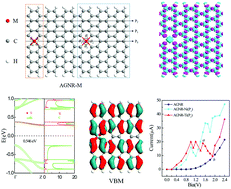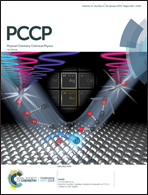Metal doped armchair graphene nanoribbons: electronic structure, carrier mobility and device properties
Abstract
Functionalizing graphene to develop on-demand nanodevices is highly desirable, but still remains challenging. Here, we theoretically propose the functionalization of armchair graphene nanoribbons by low-concentration metal (M) atom (M = Ti, Ni, Sn, or Hg) doping and investigate the structural stability and electronic behaviors of these doped systems in depth. The calculated binding energy and formation energy as well as the molecular dynamics simulation show that the geometries of these hybridized ribbons are rather stable. With metal doping, the ribbons present rich and flexibly tunable bandgaps, depending on the metal atom and doping position, which can be attributed to newly emerged hybridized subbands near the Fermi level and the entire energy band structure shifting upward due to the increased electron number in the ribbon donated from the dopant. These bandgaps can also be further tuned substantially by the stress. And the carrier mobility is calculated based on the deformation potential theory, which shows that the different metal doping can effectively control the carrier mobility, and a large carrier polarity can also be clearly observed. Furthermore, the metal doping can significantly enhance the device properties of the ribbon as compared with those of the pristine ribbon, such as creating a large negative differential resistance phenomenon. These studies demonstrate that these doping systems might hold promising applications in nano-electronics.



 Please wait while we load your content...
Please wait while we load your content...